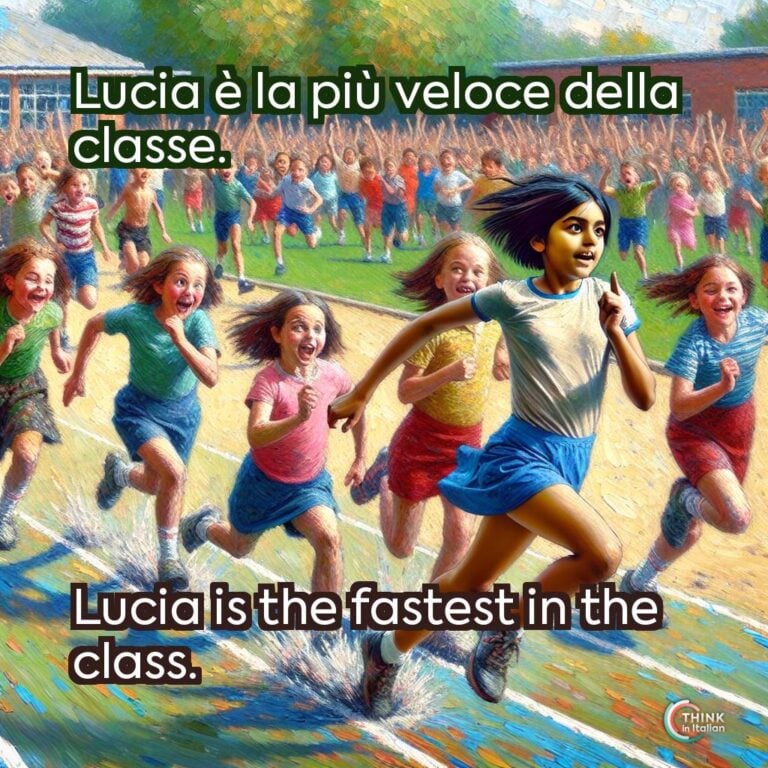What is superlativo relativo in Italian?
Sometimes, we want to describe the qualities of something or someone compared to those of other things or people, saying that someone is the most … or the least… .
To do this, in Italian we use the superlativo relativo, which indicates that an object or a person has the highest or lowest degree of quality compared to others.
Marco è il più forte della squadra.
Marco is the strongest on the team.
Noi siamo i meno eleganti del gruppo.
We are the least elegant of the group.
How to use superlativo relativo?
To form the superlativo relativo we use the following structures:
- Definite article + più (the most) + adjective + preposition di or tra
Questa pizza è la più buona della città.
This pizza is the best in town.
Martina è la più bassa tra i suoi amici.
Martina is the shortest among her friends)
- Definite article + meno (the least) + adjective + preposition di or tra
Questi piatti sono i meno costosi del menù.
These dishes are the cheapest on the menu.
La lingua ungherese è la meno conosciuta tra quelle europee.
Hungarian is the least known among European languages.
As you have noticed, both di and tra can be used to build a sentence in the superlativo relativo.
Di can be translated as of , while tra (or fra) means among, within a group.
Are there exceptions in the superlativo relativo?
Some adjectives have two different versions of the superlativo relativo:
- The regular form that follows the rules all the others follow
- An irregular form that we can see in the table below
| Adjective | Regular | Irregular |
| Buono | Il più buono | Il migliore |
| Cattivo | Il più cattivo | Il peggiore |
| Grande | Il più grande | Il maggiore |
| Piccolo | Il più piccolo | Il minore |
Io sono la minore (la più piccola) tra i miei fratelli.
I am the youngest of my siblings.
Questo ristorante è il peggiore (il più cattivo) della città.
This restaurant is the worst in town.
Another thing to note is that sometimes, di and tra can be omitted. This happens when the term comparison is obvious or implied.
Have a look at the examples below.
Hanno scelto solo i giocatori più alti (tra tutti i giocatori).
They only chose the tallest players (among all the players).
Lui è il più piccolo (di tutti i miei figli).
He is the youngest (among all my children).




